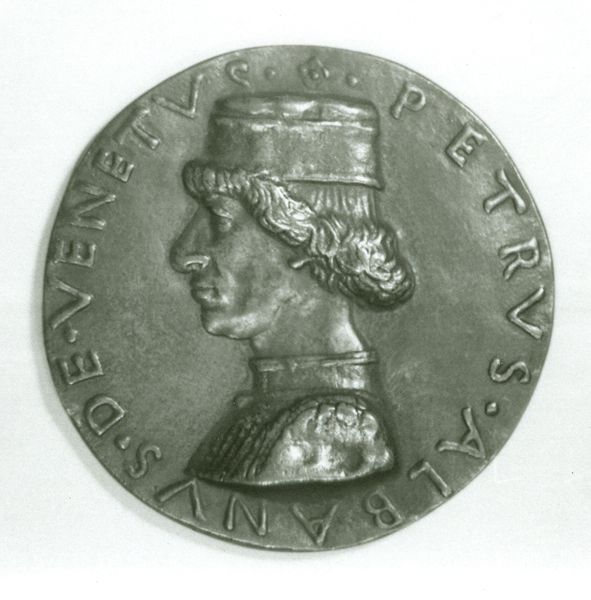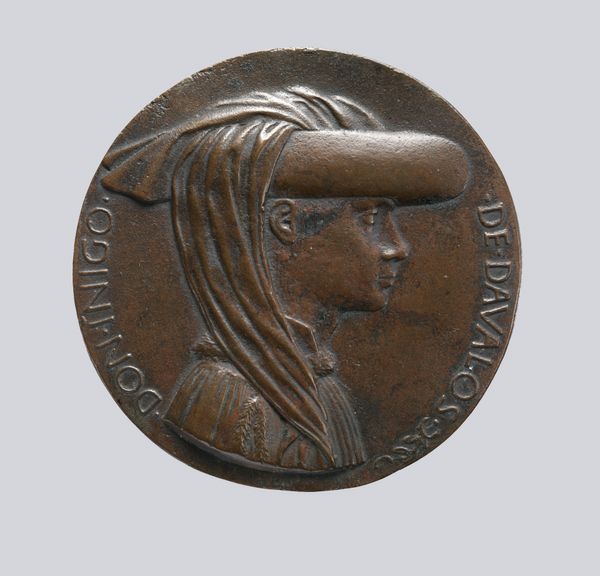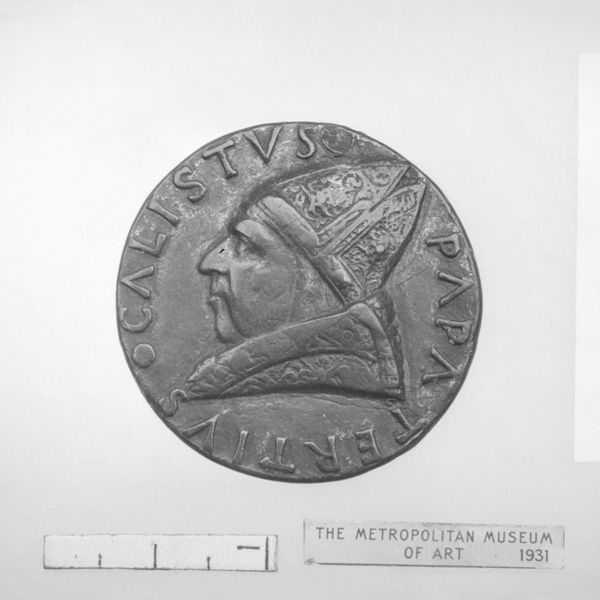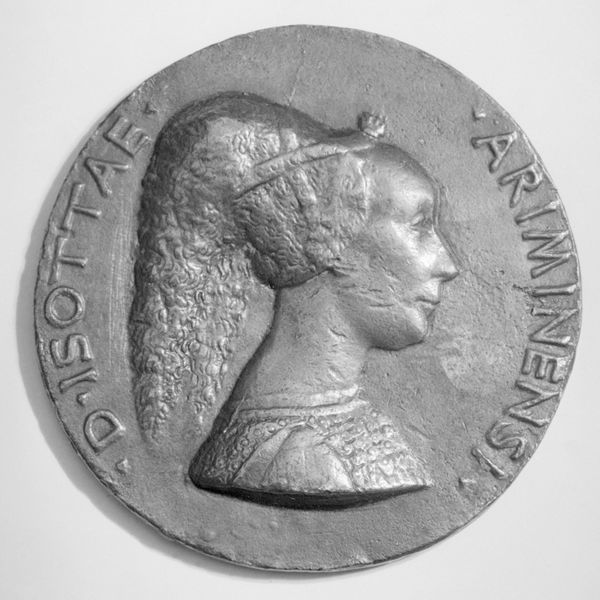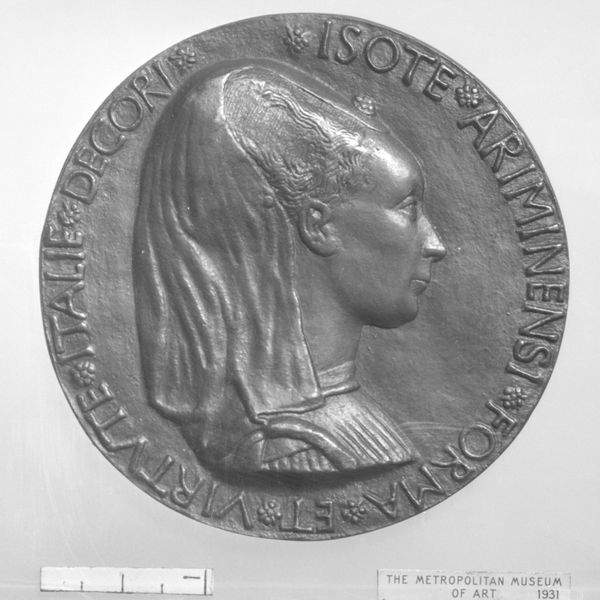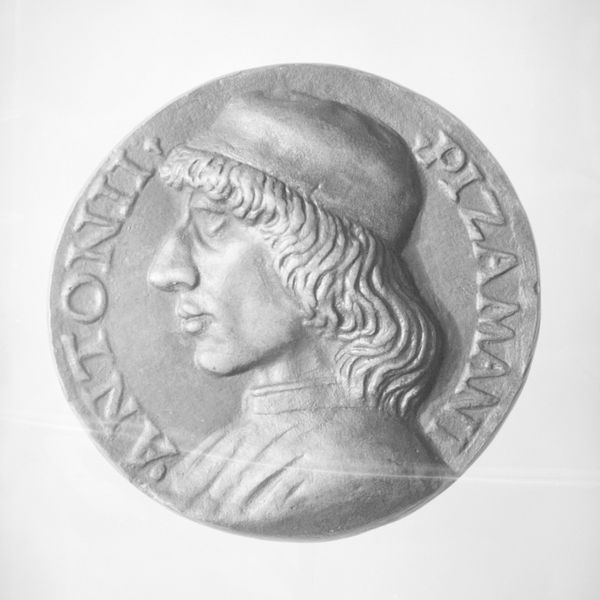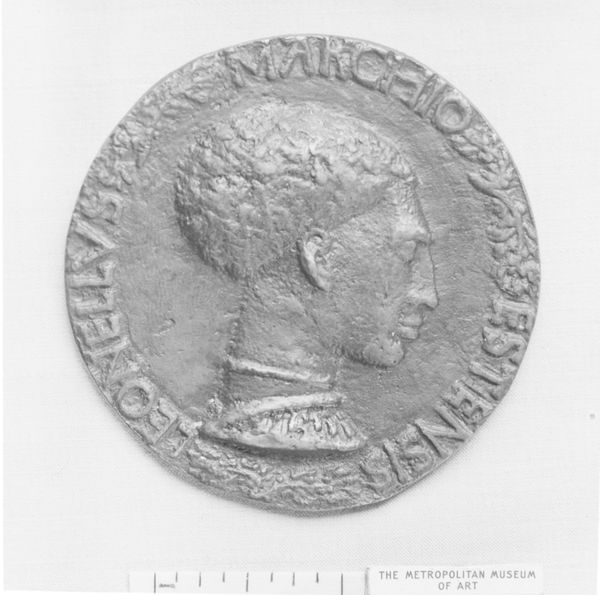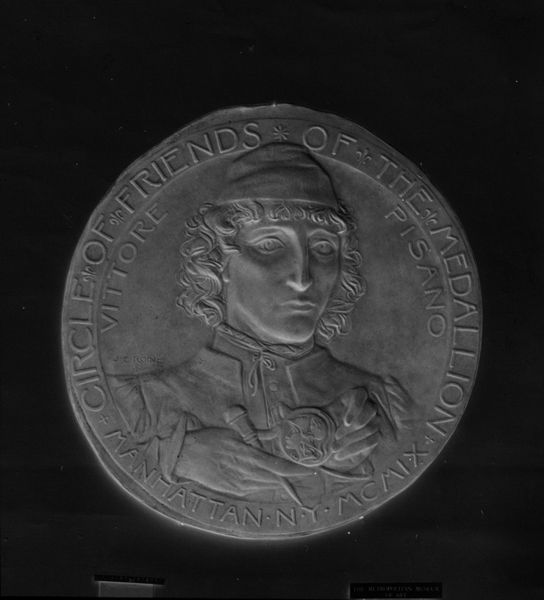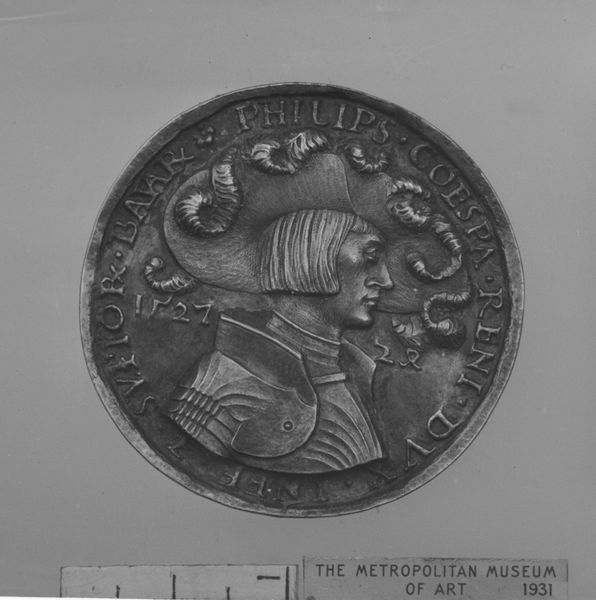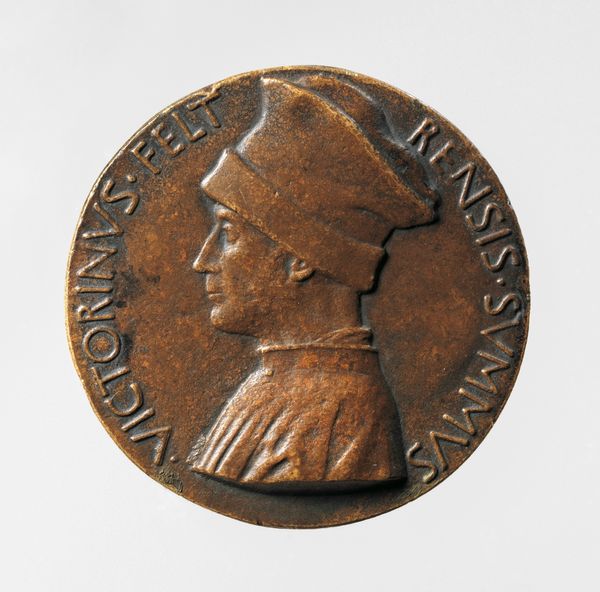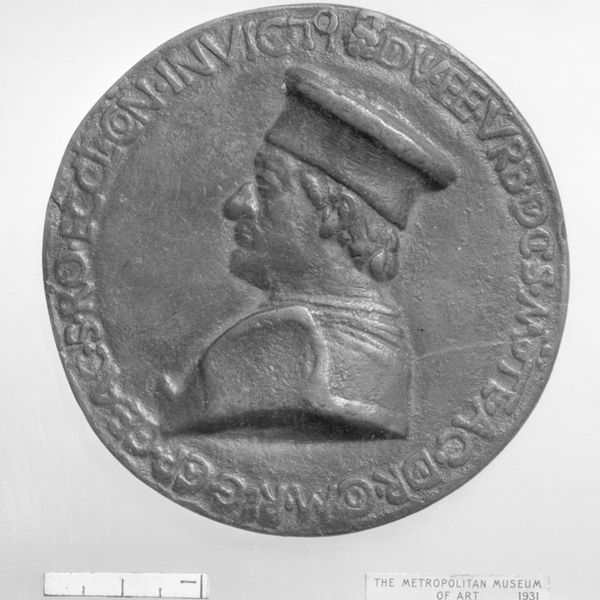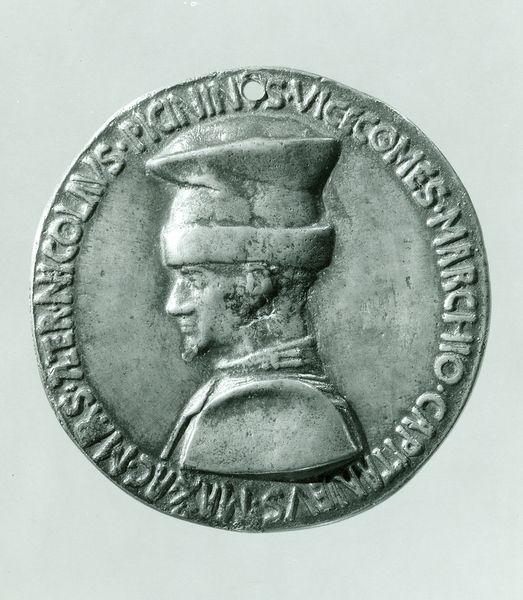
carving, bronze
#
portrait
#
medal
#
carving
#
bronze
#
11_renaissance
#
italian-renaissance
Dimensions: Diam. 8 cm, wt. 98.82 g.
Copyright: Public Domain
Editor: So, this is Pisanello's bronze medal depicting Don Iñigo d'Avalos, created sometime between 1446 and 1453. It’s such a small object, but the portrait feels so… commanding, almost austere. What do you see in this piece, considering its historical moment? Curator: I see a carefully constructed assertion of power within a specific social context. Medals like these weren't just portraits; they were carefully curated self-representations meant to circulate amongst the elite. Consider the sitter’s gaze, averted yet confident. What does that tell you about Renaissance notions of masculinity and authority? Editor: It's like he's not seeking your approval, but knows he has your attention. I suppose this medal would have served to bolster his image? Curator: Precisely. And we have to think about the power structures at play. Don Iñigo, a Spanish nobleman, strategically allied himself with powerful Italian families through marriage. These medals were likely distributed to cement those connections and to broadcast his status. Look closely at the detail in his clothing. What might that signify? Editor: Status, definitely. But there's also a kind of…exoticism to the turban-like headwear. Was that a common fashion? Curator: Exactly. It hints at cross-cultural exchange, at a time of increasing interaction – and tension – between Europe and the East. The "orientalizing" aesthetic was a symbol of wealth, knowledge, but also a form of cultural appropriation we must acknowledge. What do you make of the inscription running around the edge? Editor: It frames him, literally and figuratively, reinforcing his identity and solidifying his legacy within a specific, elite social sphere. It also is interesting how it flattens this complex persona into a solid and fixed representation of identity and power. Curator: I agree. And, in our moment, examining its visual rhetoric helps us see how constructed notions of power, identity, and even "civilization" continue to echo today. Editor: It really highlights how even seemingly simple objects can reveal so much about social and political dynamics of the time. I'll never look at portraiture the same way!
Comments
No comments
Be the first to comment and join the conversation on the ultimate creative platform.
